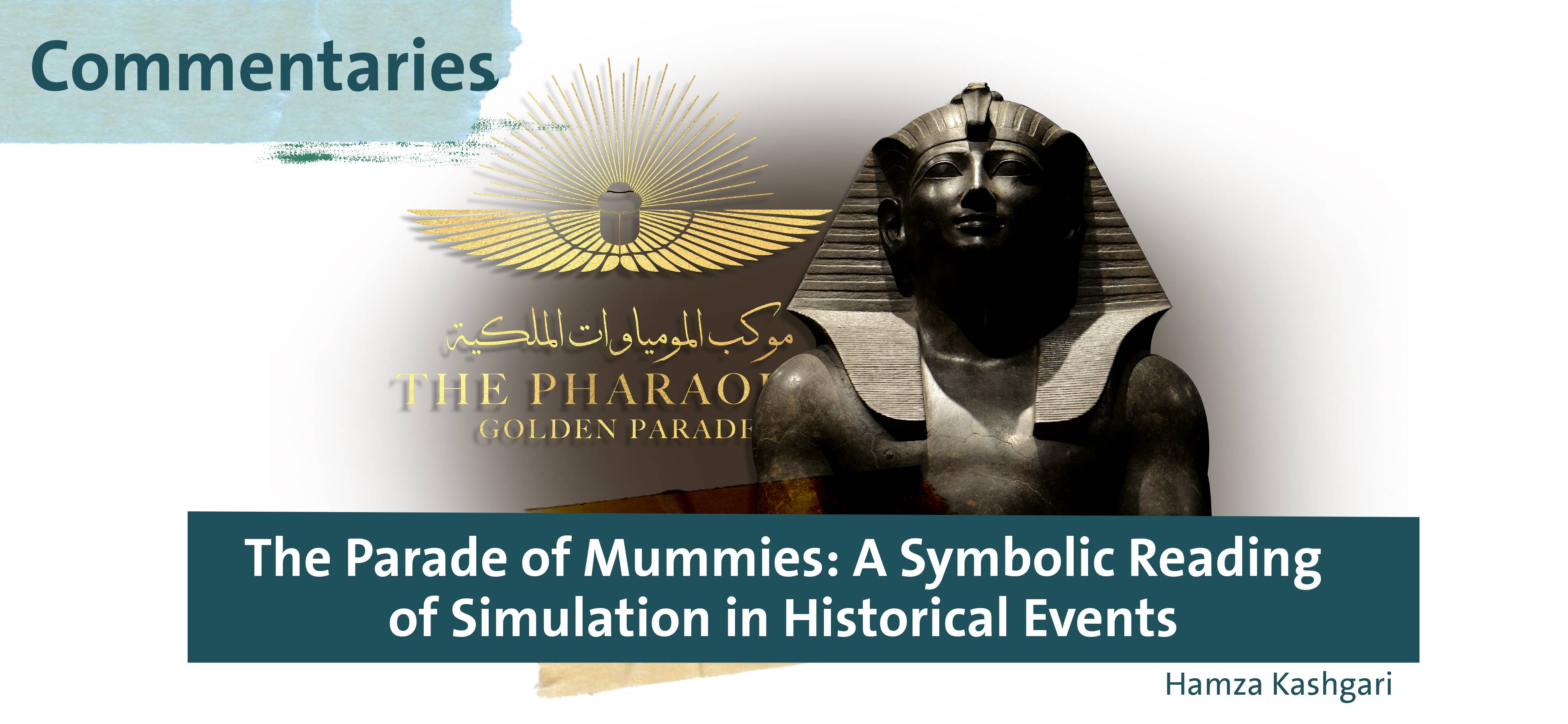The Parade of Mummies: A Symbolic Reading of Simulation in Historical Events
On April 3, 2021, twenty-two royal mummies were transferred from the Egyptian National Museum in central Cairo to the National Museum of Egyptian Civilization in eastern Cairo. According to an official of the Egyptian Ministry of Tourism and Antiquities, an attempt to emulate the past “just as it was in the age of the pharaohs” was made in order to capture the significance of the event. To accomplish this aim, an emblem of religious signification was designed, as were a number of other symbols, both ancient and religious or mythological. The symbols contained references to actual archaeological artifacts, without which the simulation would be empty. Religious rituals and hymns were recomposed, costumes reproduced, and pieces of jewelry and military chariots refashioned. The simulation of the parade of mummies sought not only to resurrect the past, however, but to leverage a symbolic connection into the present as well, following the theory of Jean Baudrillard, albeit in a modern context.

